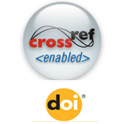



Author(s): Hasid Khan*
Over the past two decades, physiology education in Chinese mainland medical schools has undergone significant evolution, influenced by educational reforms, technological advancements, and changing healthcare demands. This paper provides a comprehensive review of the status quo and transformations in physiology teaching practices within these institutions. The review explores key developments in curriculum design, pedagogical approaches, and educational technologies employed in physiology education. It examines how traditional didactic methods have evolved to include more interactive and experiential learning strategies, such as problem-based learning (PBL), simulation-based education, and integration of clinical case studies. Furthermore, the paper discusses the impact of national policies and initiatives aimed at improving the quality of medical education in China. These include efforts to standardize curricula, enhance faculty training, and promote research in medical education. The review also considers challenges and future directions for physiology education, including the need for continuous adaptation to technological advancements, addressing faculty shortages, and ensuring alignment with global educational standards. By documenting these changes, the paper aims to provide insights into the trajectory of physiology education in Chinese mainland medical schools and stimulate discussions on strategies to further enhance educational quality and prepare future healthcare professionals for evolving healthcare landscapes.

The Journal of International Social Research received 8982 citations as per Google Scholar report